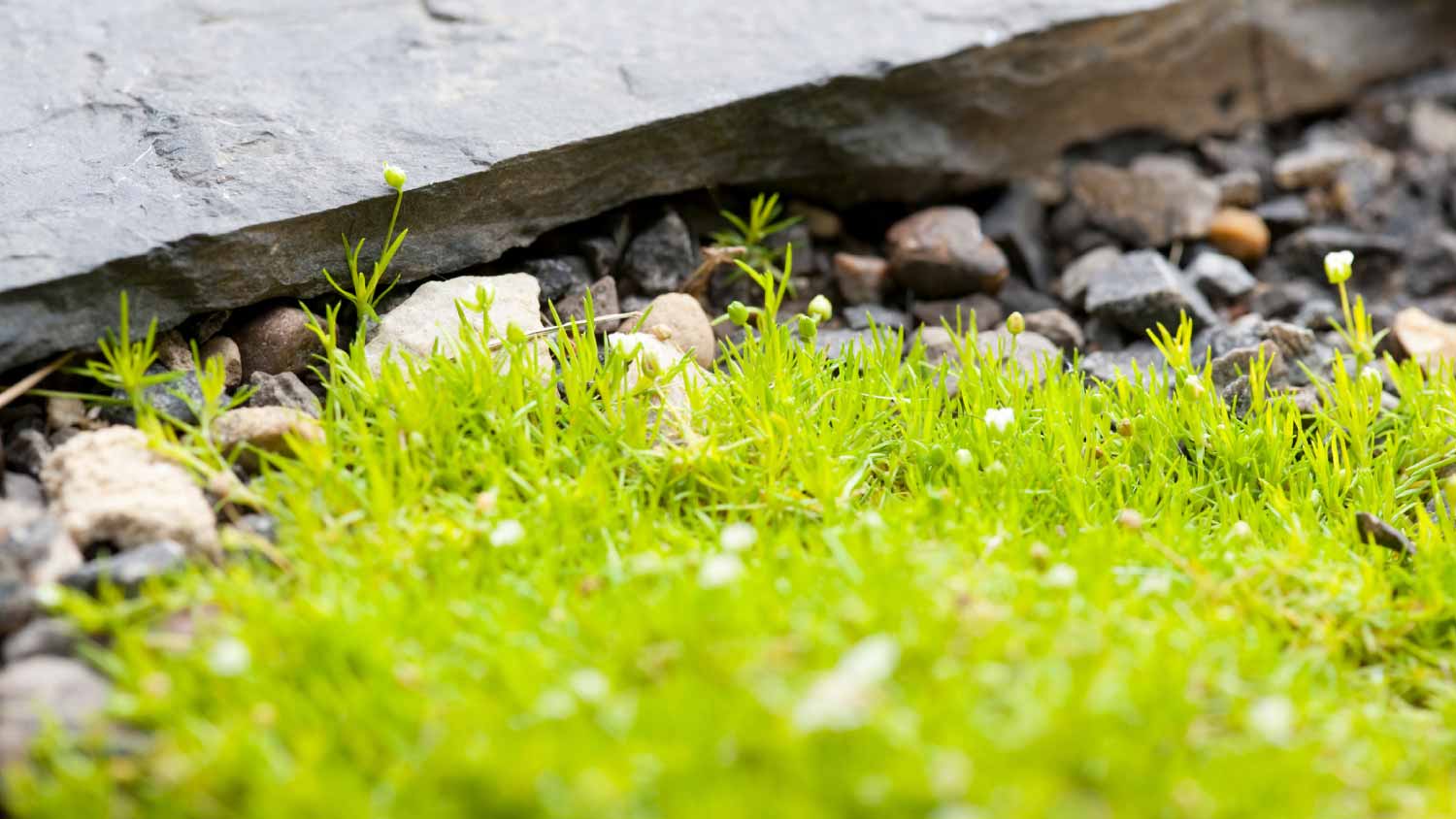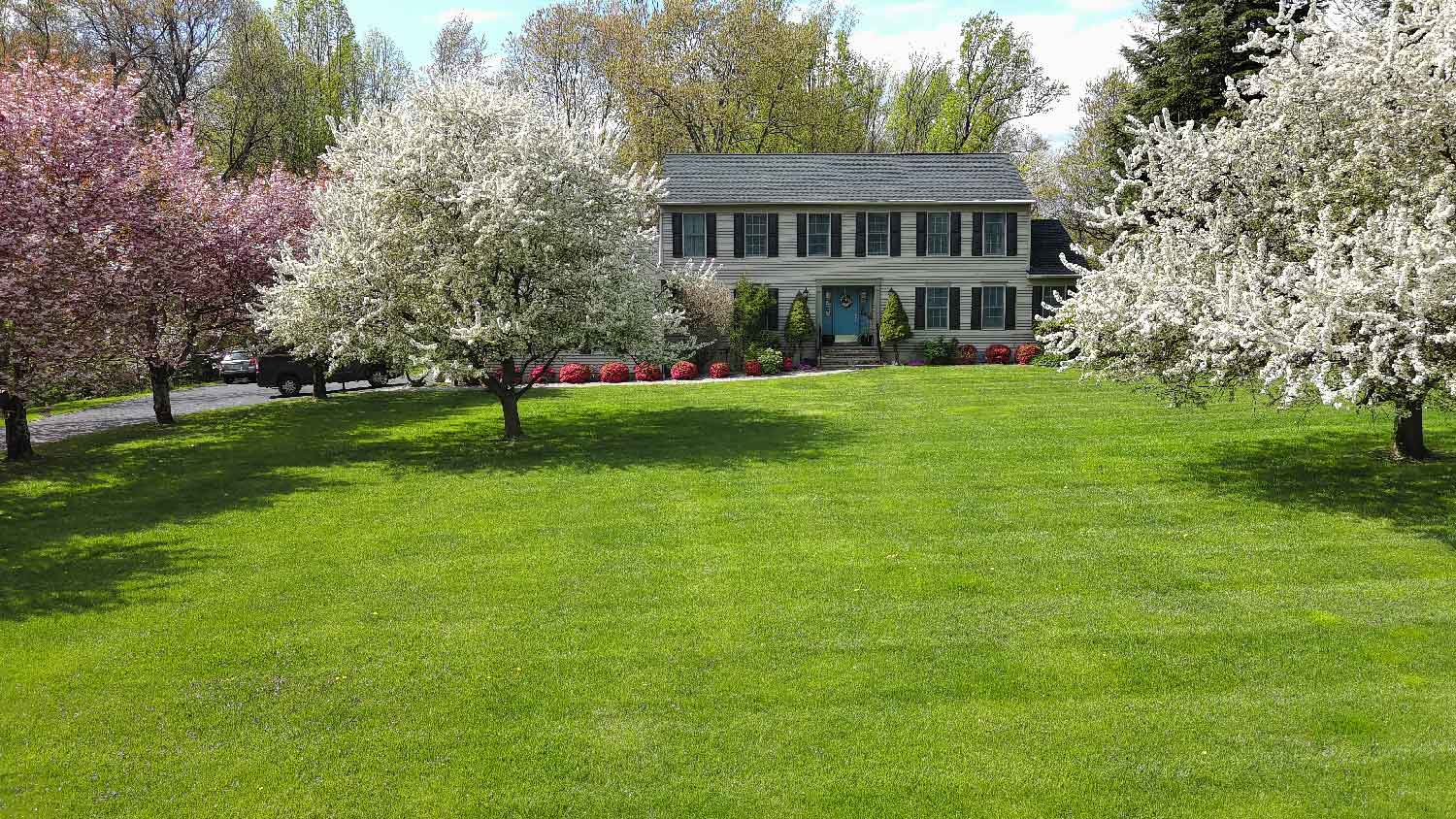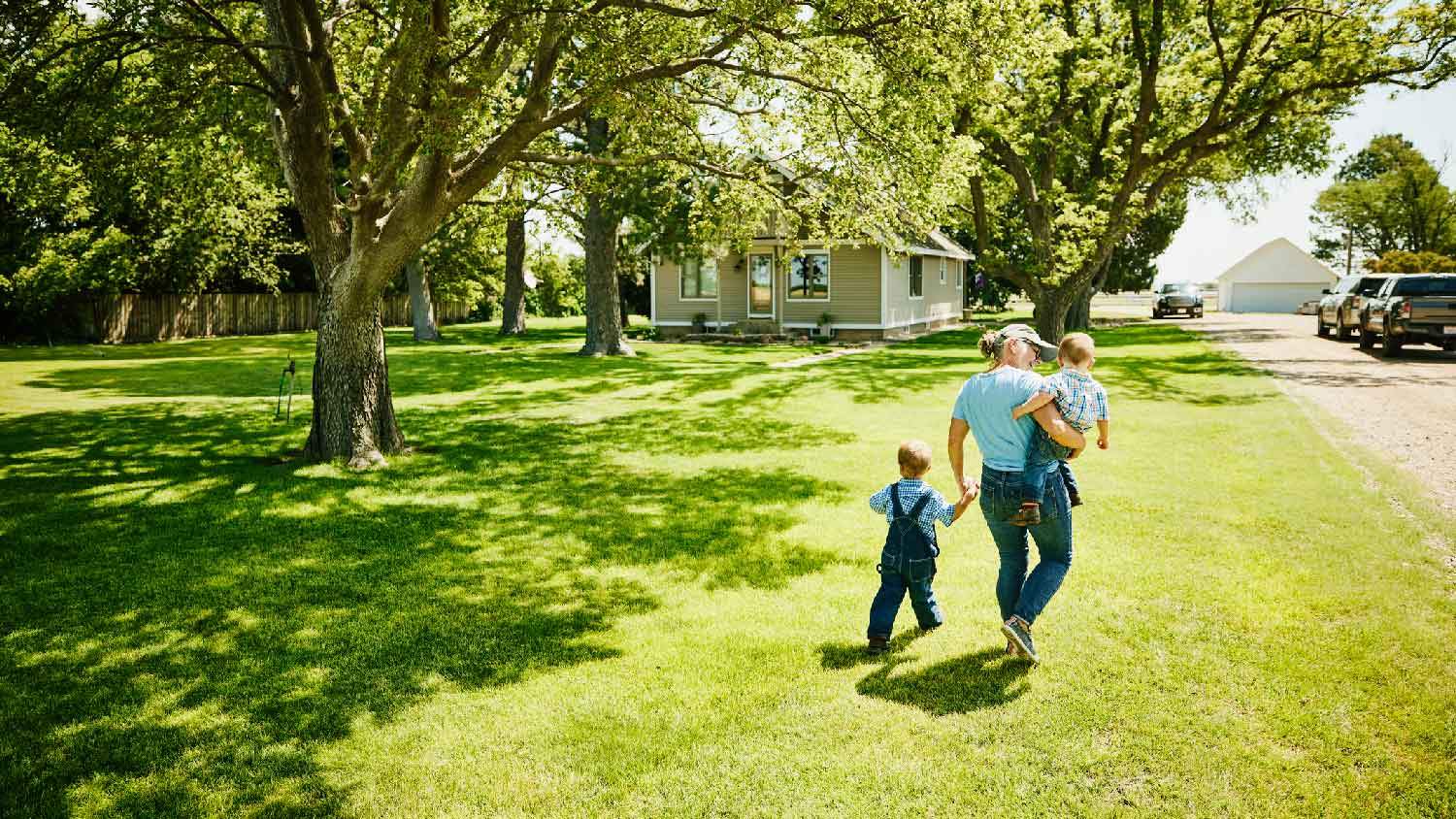12 Tips for Taking Care of Your Backyard, From Pruning to Weed Prevention
Keep your outdoor oasis healthy and green


A backyard can be an oasis, a place to escape at the end of a long day, or where you spend hours chasing kids and pets around on the weekend. But for your yard to feel serene, you’ll want to make sure the lawn, soil, and plants are healthy. For a lush landscape you look forward to escaping to, follow these lawn care tips on how to take care of your backyard.

1. Aerate the Soil
Compacted soil is detrimental to a healthy lawn because the tight soil can prevent plant roots from receiving the air, water, and nutrients they need.
You’ll want to aerate the lawn before the grass peak growth season, which can vary depending on whether you have cool- or warm-season grass. Aerating involves poking holes into the soil to allow air and water to reach the grass roots.
2. Seed the Lawn
Over time, your lawn might start to look thin or patchy. Seeding the grass can help restore your thick, green backyard. If more than 30% of your lawn looks brown or patchy, you’ll need to reseed the yard, which means completely replanting the grass seeds throughout the yard.
For a thin lawn, overseeding can help bulk up the grass, making it fuller. Spot seeding is similar to reseeding and involves adding new seeds to bare patches throughout the lawn.
3. Prune Plants and Trees
Manicured plants and trees will make your backyard look crisp and inviting. Pruning dead vines and branches will also stimulate healthy growth in your plants. This is also important for safety—removing dead branches from trees can reduce the risk of the branches falling on your home during a storm.
4. Clear Out Leaves

The oranges, yellows, and reds of changing leaves in the fall may look pretty, but it’s important to grab the rake and remove those dead leaves. If you let the piles of leaves sit on the lawn until spring, they can invite pests and mold.
It can also hold too much moisture in the soil and prevent air and sunlight from reaching the grass. Come spring and summer, you could be left with a brown, patchy backyard.
5. Mulch Flower Beds
A fresh layer of mulch can make your whole backyard look brand new, but reapplying mulch in the spring also has several benefits to your landscape. In addition to preventing weeds, mulch will keep more moisture in the soil and protect it from extreme weather changes. As the mulch breaks down, it also provides added nutrients to the soil.
6. Mow Higher
Some homeowners are tempted to mow their grass short, around 1 inch in height. But keep in mind this grass-cutting tip: Taller grass will make the lawn look fuller, prevent damage to the grass, and help suppress weeds. By letting the grass grow taller, about 3 to 4 inches, the root system can develop deeper, making the grass more drought-tolerant. Plus, larger roots can prevent grubs from taking over your lawn.
7. Prevent Weeds
Weeds can make a yard unsightly, but they can also crowd out the plants you actually want to keep around. Thankfully, there are many DIY ways to control weeds, such as mulching or homemade weed killers. Another option is to simply pull troublesome weeds out of the soil, roots and all, by hand as soon as you notice them.
8. Invite Pollinators

A healthy backyard is one buzzing with pollinators, like bees, butterflies, and hummingbirds. Pollinators boost plant health and help them reproduce, so your yard will be teeming with vibrant plant life. To attract pollinators, add native plants and water features to your backyard. Avoid using pesticides for weeds and harmful insects to keep the pollinators healthy and happy.
9. Test the Soil
For plants to grow properly, they’ll need the right amounts of nutrients from the soil. Fertilizer or compost can help boost nutrients, but it’s important to know what types of nutrients and how much of them your soil needs.
Testing soil costs about $15 for an at-home kit. Use the results to determine the type and amount of fertilizer you need for your lawn and garden.
10. Choose the Right Grass and Plants
Grass is just grass, right? In reality, there are many different types of cool-season and warm-season grasses, so you’ll want to choose a grass seed that works best for your climate, soil, and hardiness zone. Plants also follow hardiness zones, and a healthy landscape relies on choosing native plants that are suited for your location.
11. Water Sparingly
Sometimes, rain alone isn’t enough to keep your lawn thriving. You may need to water your lawn with sprinklers or an irrigation system to maintain its lush, green hue. On the other hand, overwatering can kill off beneficial bacteria in the soil and lead to dead grass. Create a watering schedule, applying about 0.75 inches of water two times per week during the growing season.
In the spring, you won’t need to water your lawn much, if at all. Only water your yard in the spring if it goes without rain for about two weeks. For newly seeded lawns, water daily and keep the top 2 inches of soil moist.
12. Fertilize at the Right Times
Fertilizer is made up of nitrogen, phosphorus, and potassium, which together can boost your grass and plant health. But too much fertilizer can invite weeds, burn your grass, and pollute local waterways.
You’ll want to apply fertilizer about one or two times per year. The times of year will depend on the type of grass you have, so hire a local landscaper to determine the best times to fertilize your yard.





- What Do You Put Down First: Grass Seed Or Fertilizer?
- Here’s How Long Grass Grows If You Don’t Mow Your Lawn (And Why You Really Need To)
- When is the Best Time to Cut Grass? Why Turf Timing Matters
- 7 Tips for Keeping Your Grass Green During a Drought
- Best Grass For High Traffic Lawns: 6 Types to Try
- 13 Essential Landscaping Tips for a Beautiful Spring Garden
- 8 Fertilizer Tips for a Showstopping Lawn and Garden
- Pros and Cons of No-Mow Grass: What to Consider
- Best Types of Mulch for Your Vegetable Garden
- When Grass Becomes a Weed: How to Control and Get Rid of Bermuda Grass















